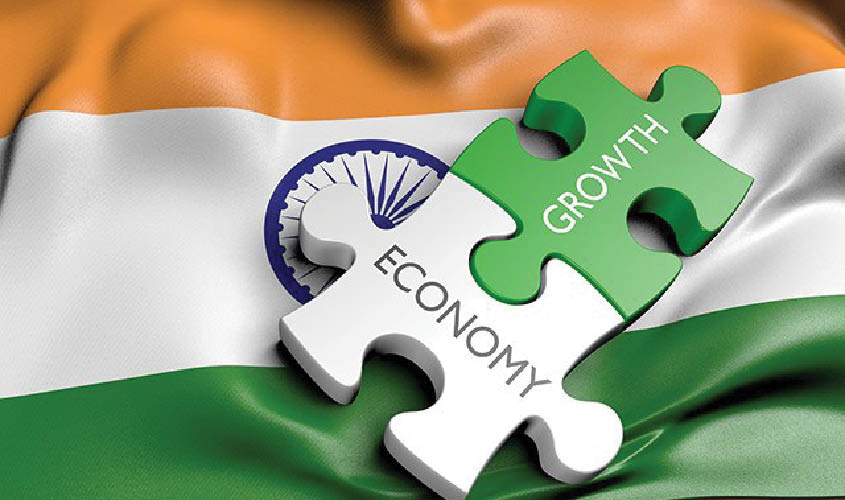India is projected to be the world’s most populous country by 2024 and home to more than 1.5 billion people by 2030 and 1.7 billion by 2050. India has more than 50% of its population below the age of 25, and more than 65% below the age of 35. By 2020 the expected average age in India will be 29 years (Source: Wikipedia—Demographics of India). Over 70% of the population lives or is linked to over 640,000 villages in the country, contributing 50% to India’s GDP. 18% of population lives in 7,834 towns contributing 25% to GDP. 12% population lives in 44 cities (Census 2011). The iconic pyramid has expanded in its middle, creating a “diamond” by the increasing “climbers” entering the lower/middle classes in both urban and rural areas.
Since the turn of the 21st century, more so from the last decade, the rate of change of development in both urban and rural areas has accelerated rapidly. This has been the impact of huge government expenditure in infrastructure, rural development schemes, financial inclusion, spread of telecom and mobile phones, and the fast establishment of fibre optics network across the country, facilitating internet connectivity even in remote villages and geographies. This impetus is fuelled by digitalisation of media, communications and skill building programmes through widespread penetration of formal and informal educational forays, through schools, colleges, universities and specialised training institutes. Technology and information accessibility and adoption across all strata of socio economic households has resulted in a multiplier of aspirational thrust at village and semi urban levels. Agriculture, both farm and non-farm, is seeing fresh visions from the government of “doubling farmers’ income by 2022”, albeit, through solar energy penetration, use of modern practices using improved mechanisation such as new farm equipment, tractors, drones, satellites, fertigation and many diverse regional initiatives, though public private partnerships, and agri start-ups. Indeed, agriculture, thus far a neglected sector, will likely see land reforms; streamlining of the commission agency system; build up of cold chains and storage infrastructure for post-harvest crop protection; much higher minimum support prices than ever before for growers; a robust farm to retail value chain, aided by e-markets such as National Agricultural Market (NAM) and a variety of e-commerce solutions that may eliminate many redundant members in the channel of distribution, thus delivering higher price to farmers for their produce.
E-governance, mobile wallets, cashless transactions through internet, and banking infrastructure are likely to reduce the menace of corruption and exploitation. Animal husbandry, dairy farming, poultry, fisheries, and aquaculture will get linked with new agribusiness models, that usher in an era of inclusive growth through PPPs, FPOs and KVKs, thereby, giving a boost to productivity, disposable incomes and increased spread of services into travel, entertainment, healthcare, insurance, banking, tourism, retail and industry. A robust GST and taxation regime, operated through technology, Aadhaar and e-governance will result in increased tax base, revenues, investments, and consumption of goods and services—the essential requirements of economic multipliers that are poised to propel India to 8%-9% GDP in the future years. Spread of electricity to villages, record food and milk production; LPG connections; and “Make in India” impact are factors that cumulatively are likely to generate employment, especially in small towns, thus encouraging reverse migration. Digital transformation is forcing everyone to change, the way future living will emerge, riding on a wave of political stability and a whole new set of aspirational surges.
Such economic, technological and social reforms, all managed through political focus, are bound to result in imminent changes for all sections of society. Women, especially from rural areas, will see more and more empowerment and opportunity to raise their head and demand employment, products and a more meaningful place in family and society. Hitherto, their contribution to nation building was minimal; in the future their contribution to income generation, adoption of new social order and becoming significant players in services, retail, and agri businesses will inevitably add to national growth. Women from semi urban and urban areas are already playing leadership roles in participating in diverse sectors and carving out their place in the world. They will want a place on the driving seat.
Agriculture will see technological impact, higher exports of fruits and vegetables, more GM crops, new vertical farms and a whole new emerging way to produce and package food. Agri business start-ups are the new beacons of change.
Smart cities, towns and villages, as they stabilise, will open up exposure of the youth to contemporary lifestyles, better health and layers of different thinking and outlook towards domestic and global issues. The acceptance of India by the world as an emerging economic superpower will enable vastly increased levels of economic growth and social development. The youth, now educated, will gradually have a different mindset and demand quality and leadership to satisfy their aspirations.
Indeed, there are winds of imminent change. India and Indians have come a long way from being a country of servants being ruled; their finest hour is “now”; their future, verily in their palms. How we, as a vast, diverse nation learn to weave these changes into a tapestry that gives us happiness, health and safeguards our culture, traditions and values, will be challenges galore. Surely, we must take pride when we call ourselves “Indians” and keep our heads high, and let the world, for a change, die of envy.
© Chander Sabharwal

